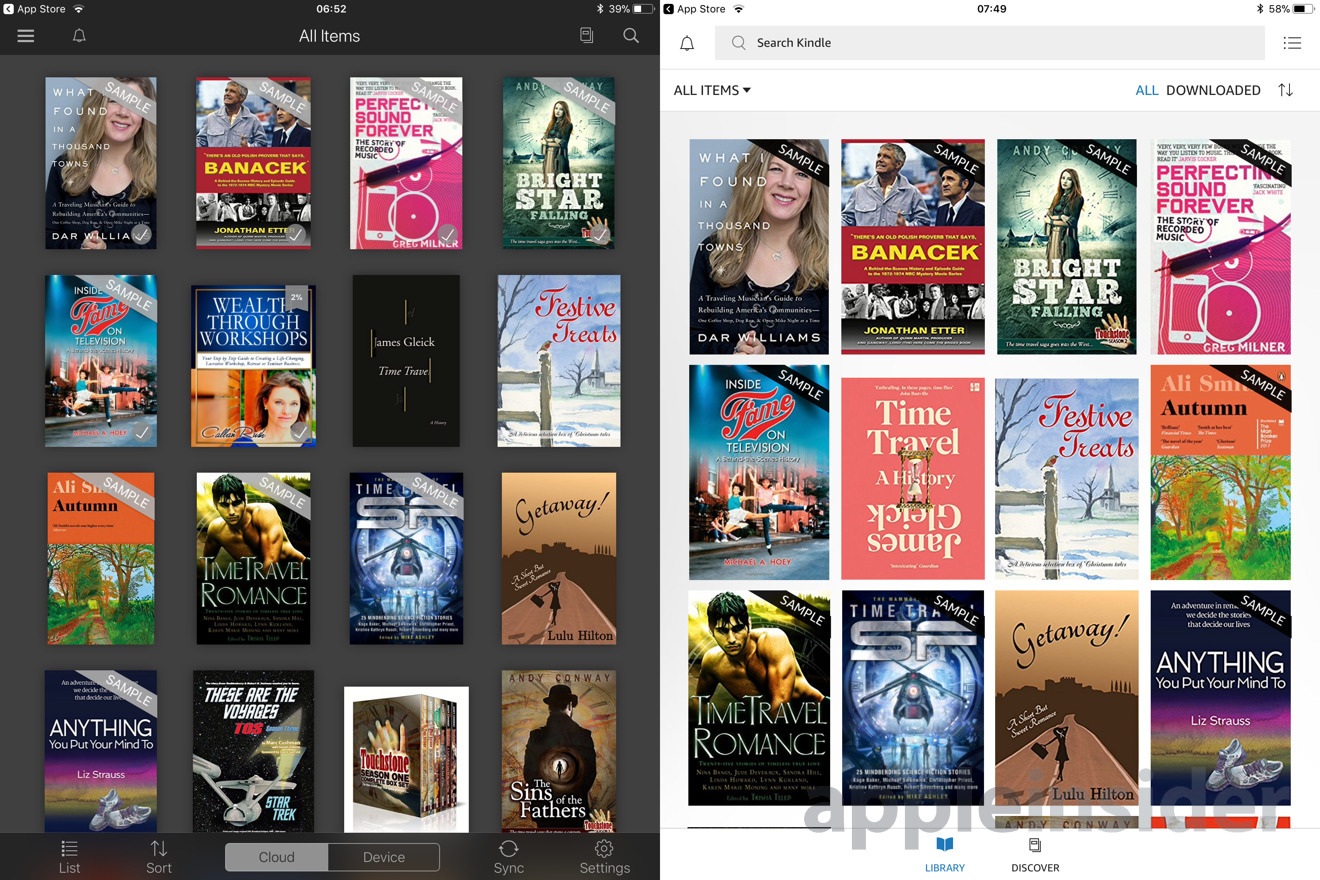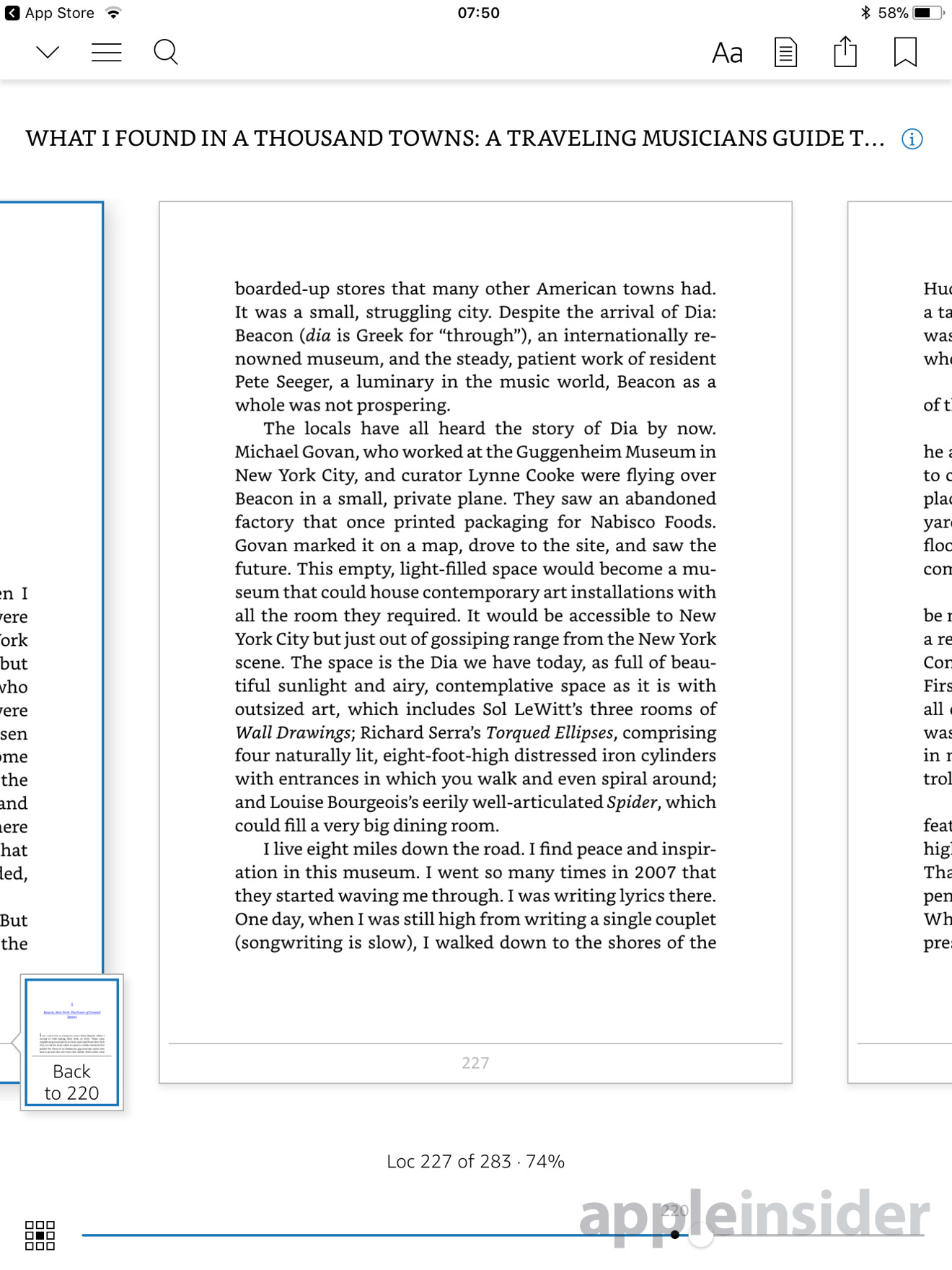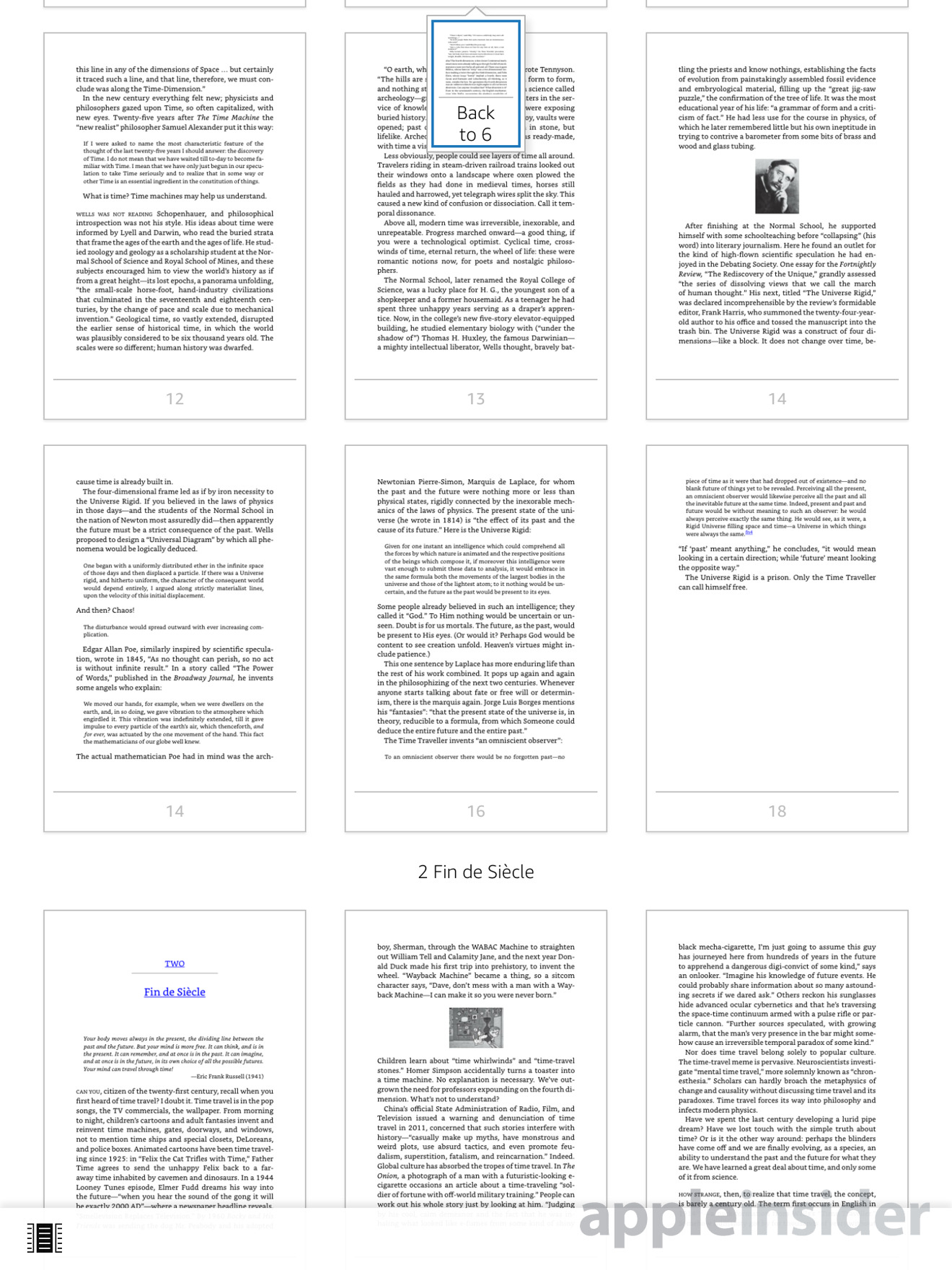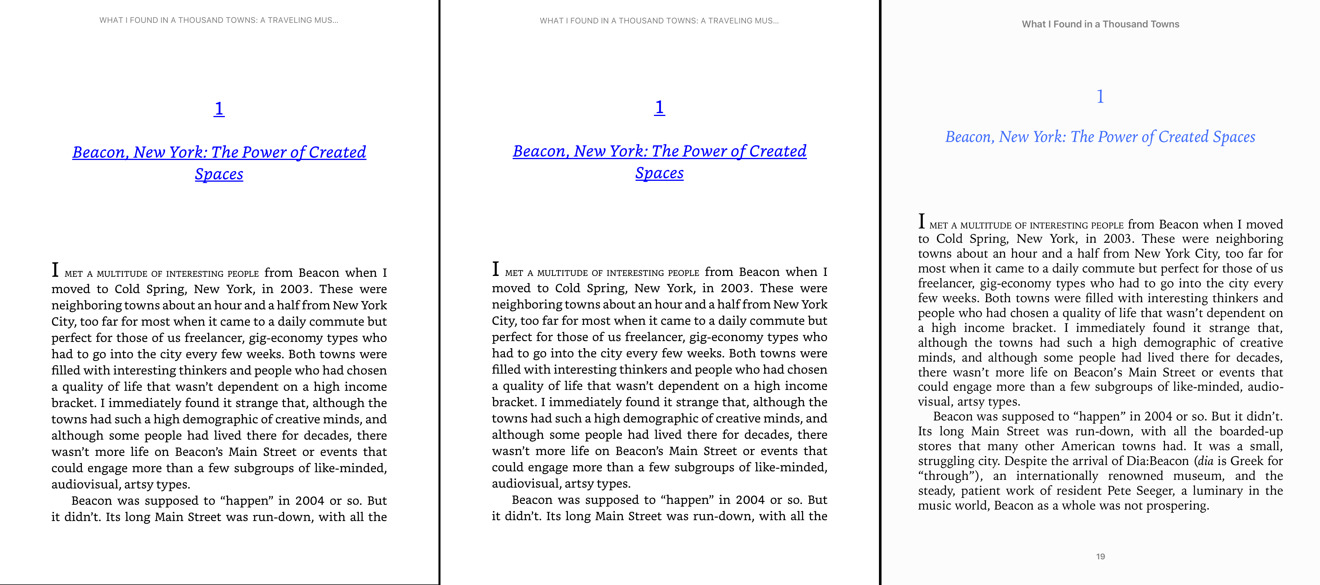Light mode and improvements to Page Flip are welcome but it's still the number of books available that make the latest version of Amazon's Kindle app for iPhone and iPad a must.
Even if you have never bought a Kindle device, you have one already: there's a Kindle app for Macs, iPhones and iPads. The newly updated Kindle 6.0.1 for iOS revamps the look and feel of the book-reading service and also tightens integration with Goodreads to get you recommendations from a community of fellow readers.
This Goodreads connection is currently only available to U.S. subscribers of the service. If that's you, though, then the new Kindle app adds an extra Community tab at the bottom of the screen. Tap that and you're off chatting inside the Goodreads service while staying within the Kindle app.
All other changes and improvements are available for every user. Of those, the most immediately visible one a small but very effective one: by default you now see a new Light Mode. Wherever you saw heavy black borders before, you now get white and the size of book covers has been increased.
There's no difference when you're actually reading a book: pages are still shown as white by default or optionally sepia. It's when you're in your library of books or searching for others that this Light Mode appears and appeals. It makes the app feel lighter, somehow, and a more pleasant reading experience.
The old Page Flip setting that animated pages turning as you flicked through a book has also had a small update but it's important. If you've ever looked at Page Flip and just switched the setting off, switch it back on now.
When you're on a page and skip back or forth, then Page Flip does what it always did. What's new comes when tap on the centre of the page and the book turns to a series of pages that you can scroll through faster. Then as soon as you do scroll to another page, the one you were reading gets permanently displayed as a thumbnail at the bottom left of your screen.
It looks like iOS 11's screenshot preview except that it stays there until you either tap it to return to your original page or pick a new one.
For non-fiction, it's a particularly great boon as you can skip back to remind yourself of a fact or of who is being interviewed. So long as you don't actually tap on a previous page, you can quickly read what you need and go right back to where you were.
Then for non-fiction or any illustrated book, you can now pull out to see several pages at once. Tap on the page to get that left-and-right scrollable view of pages and you also have a new button to display nine pages at a time in a grid.
The idea is that you can do this to quickly see which page has that Venn diagram or famous person's baby photograph on.
That's the theory but it's not entirely the practice. Previously, if you were reading a book that had a photo or any other image then Kindle might display its caption on the next page. That's not great but it becomes infuriating when sometimes you turn the page just to read the caption. You can find that when you turn back to carry on with the book, Kindle reflows all of the text and you have to hunt for where you'd got to on the page.
We say previously' because we can't prove whether this has been fixed or not: it depends on the book and it appears to depend on how adept the publisher is at creating the ebook file.
Yet other aspects of Kindle that make it less of a pleasant reading experience have remained the same. There has been a change to the formatting but it's the very tiniest alteration to the leading on a page.
On the left is the previous version of Kindle and in the center is the new version 6.0.1. To save you getting out a ruler, let us tell you that the text is slightly higher up the page in the updated version.
You do now get two more font options than you did before but the defaults remain the same.
The image on the right there is of the same book in Apple's iBooks and you can more clearly see the difference. Without appearing squashed, iBooks is showing more text at its default size. It's also got what readers will recognize as an actual chapter title where Kindle is displaying the same thing as a clickable weblink.
The iBooks version also keeps a page number at the bottom. Optionally, Kindle will display its equivalent but usually that equivalent remains the ridiculous Loc (for Location) instead of a page number.
We get that page numbers change when you alter the font size as you can on an ebook, but, still, come on. In all probability, nobody has ever called you and said you must read this fantastic passage at Loc 227 of 12816. If anyone's asked you how far you are through a book, you have never told them you're 71 percent of the way through.
The "Loc" insanity might be changing, though. We do have one Kindle book that limits this figure to when you've tapped on a page to scroll around the book. The rest of the time it displays an actual page number and whether that's the new Kindle app or a publisher working a minor miracle, we'll take it.
Except that even in this one book, Kindle still lacks another feature iBooks has always had with page numbers. Apple's iBooks will tell you "4 pages left in this chapter". We can't count the times we've been reading in the middle of the night and decided we'll just get to the end of this chapter specifically because we could see that figure.
So iBooks remains the more pleasant reading experience but Kindle 6.0.1 is much improved - and it still has dramatically more books than Apple's offering.
It's a shame that Apple's App Store-related fees essentially mean Kindle makes you buy ebooks at Amazon instead of directly within the app. Yet, when you've done that dance once or twice, you do get used to it and the sheer wealth of reading matter available is what makes Kindle a great iOS app.
Kindle 6.0.1 is free on the App Store for both iPhone and iPad.
 Mike Wuerthele and William Gallagher
Mike Wuerthele and William Gallagher











-m.jpg)






 Charles Martin
Charles Martin
 Christine McKee
Christine McKee
 Wesley Hilliard
Wesley Hilliard
 Malcolm Owen
Malcolm Owen
 Andrew Orr
Andrew Orr
 William Gallagher
William Gallagher
 Sponsored Content
Sponsored Content







19 Comments
I don’t like the new white look quite frankly. I also don’t like the fact that my books are no longer in the listing. Now, only books gotten since the change show up, unless you were in the middle of a book when it was updated. It looks lousy goosy now.
I got a Kindle after years waiting for Apple to care about readers. I thought by 2017 iPad would have an e-ink or reading mode.
It’s nice because it’s easy on the eyes and “feels” like a book but it’s missing all the Apple touches you get from Apple.
I'm not crazy about the new UI. I guess the previous wasn't anything to write home about, but this one hides commonly used items (like accessing your bookmarks, notes, etc.) and emphasizes the Goodreads, taking up space when we might not even ever use it. They also did a sloppy job in some area, like the settings page, where tops and bottoms of text are chopped off in areas.
re: page number - Yes, that has been a mess since the start. Then they added 'real' page numbers for *some* books (probably from when the book was scanned?). It's too unreliable to really use, and seldom available when you need it (for example, citing when writing an academic paper). The Loc, as silly as it seems, is actually more universal and accurate for academic work.
The problem is the reflow, and I'm not sure there is a better way to solve the problem. Even if you try to match to the print version, there are often several print versions of a book... so then we'd have to make sure we have an e-book to match each printing. The whole citation thing is a mess anyway... maybe the whole system should get some kind of overhaul some day.
Oh, btw, I found this neat article for anyone who has wanted the text-to-speech feature on a real Kindle when using Kindle books on iOS or macOS.
http://blog.the-ebook-reader.com/2015/02/19/how-to-enable-text-to-speech-on-ipad-iphone-for-kindle-ibooks-etc/
If you combined this with Overcast's paid plan, you could easily turn books into audio-books and put them in your podcast library.
I like both iBooks and Kindle and use both extensively. I agree with pretty much everything stated in this article, especially the lack of page numbers in Kindle being an annoyance. The Kindle light theme does nothing for me since I like to tone down the brightness in these apps.
The biggest beef I have with Kindle is the variability in the enforcement of the maximum number of instances of each book allowed to be installed locally on reading devices, which includes all Kindle devices as well as Kindle apps. With a Prime subscription a number of books are no longer metered but some still are. Without a Prime membership even some free books are also metered, which seems rather odd to me.
iBooks does not seem to apply any metering from what I can tell. But perhaps it does meter the number of installed copies for expensive journals and textbooks. Because of this metering difference I tend to purchase books that are available on both Apple and Amazon from iBooks unless the price difference is substantial.
I suppose the Kindle metering limit is defined by the book's author or publisher. For my use cases I'd prefer that metering be done based on the number of simultaneously open instances of a book, as is the case for many floating software licenses. For me the maximum number of open books would hover very close to one (1) because I have multiple devices and tend to only use one device at a time. But I understand the reason why floating licenses would be a pain if you don't have an online connection to handle check-in and check-out tracking. Perhaps allowing customers to choose between floating use licenses instead of local install licenses would be a reasonable compromise.
Kindle’s “Loc xxx of x,xxx” is indeed ridiculous. It’s the sort of left-brained nonsense you get when programmers are in charge of UX. Loc isn’t useful to anybody. Guys like Bezos like to think of themselves as Jobs running Apple, but stuff like this reminds us that they aren’t.